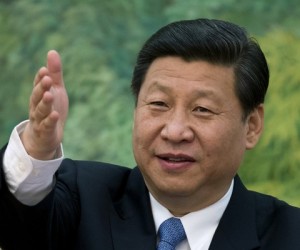
News Americas, LONDON, England, Weds. Jan. 28, 2015: A few days ago, Dong Xiaojun, the Chinese Ambassador in Jamaica, wrote a commentary on the recent meetings held in Beijing between China and the Foreign Ministers of the Community of Latin American and Caribbean States (CELAC); the political grouping that includes all of the nations in the Americas other than the US and Canada, and the dependent territories.
The Ambassador made it clear that for China, the meeting on January 8th and 9th was ‘of milestone significance and profound influence.’
It aimed, he wrote, to institutionalize overall co-operation and move the relationship to a higher level. In addition to identifying the strategic outcomes of the meeting (covered in this column last week) he observed, specifically, that China is ‘unswervingly committed to the development of comprehensive co-operation partnership with Caribbean countries and intends taking more measures to strengthen its support for the region’s economic development.’
The Ambassador noted too that China deemed the Caribbean ‘an important force in the international community’ and ‘intends enhancing mutual support and collaboration with Caribbean countries on international and regional issues.’
China understands, he wrote, ‘the concern of Caribbean small island countries on climate change and international financing, and is ready to provide countries in the region with assistance to the best of its capacity.’
‘No country or regional organization will be neglected or left behind the tide of China-CELAC co-operation,’ he stressed. His words, like all official statements emanating from China, are deeply considered and should be welcomed. They confirm that Beijing hopes to move its multilateral relationship with the region to another level, offering potentially the opportunity to rebalance international relationships and new forms of collaboration.
In Beijing one of three documents agreed – the 2015-19 China-CELAC co-operation plan – sets this out in detail. It includes sections on international and political affairs in which both sides agree to enhance collaboration internationally on a new global development agenda, climate change and other issues. There are parts on trade, investment and finance, which sets as a joint China-CELAC objective the increase in two way trade to US$500 billion over ten years and to increase the stock of what is largely Chinese investment to at least US$250 billion over the same period.
More potentially significant, however from a Caribbean perspective, is the language that speaks to encouraging closer co-operation between micro, small and medium sized enterprises with a view to supporting the ‘internationalization and integration of SMEs in global value chains.’
There is a section on infrastructure and transport which suggests that a new China-CELAC infrastructure forum may be established and there is emphasis placed on the development of transportation, ports, logistics, broadband, radio and TV, energy and urban development. The agreement also speaks to improving connectivity within the hemisphere and with China.
There are sections identifying co-operation in energy and natural resources; agriculture; industry, science and technology; aviation; education, which envisages thousands of Government scholarships and training opportunities, and language teaching by both sides; collaboration between the media and publishing houses in CELAC nations and China; tourism, including increased flights from China; environmental protection; and people-to-people and political exchanges. The list goes on.
The scale of the vision and interest is breathtaking given that for China this is not idle rhetoric but a commitment to accelerate and change the relationship. That said, the problem, when it comes to much of the Caribbean, will be to find scaled down ways to deliver what is on offer. The inequality in size between China and every Caribbean nation, the fact that the region is fractured politically and economically, has few contiguous borders that would facilitate integration, has no single position on China, and largely lacks the capacity to deliver in real time, will make it hard to implement. Moreover, there is little to reassure the region’s private sector and nothing on joint ventures. Few if any of the bigger or medium sized Caribbean companies have yet established any significant relationship with China that could bring broader benefit to the region, and some may wonder what this agreement means for them.
The danger is that in a Caribbean context many of the envisaged co-operation initiatives may be seen as reflecting a desire to utilize the region as a geographically convenient platform for accessing the US and other markets. While there is nothing inherently wrong with this, China’s commitment needs to be coupled demonstrably with the recognition that the Caribbean needs more basic support to be able to grow its economy and private sector. Put another way, if a new relationship is to work to everyone’s benefit, it has to be about more than governments talking to each other, or about budgetary support, debt restructuring and refinancing as the Bahamian Prime Minister surprised some in CARICOM by suggesting in Beijing. Rather, China has to be able to provide a wider economic stimulus that goes beyond creating employment through investment when it comes to the Caribbean, otherwise the region is unlikely to avoid repeating its economic history as a geographically convenient location for others.
For instance, China might work with those industries like rum and tourism and their representative organizations in the private sector, to determine how their value added product and their associations might be supported to penetrate the Chinese market. It might also develop schemes that create Caribbean joint ventures or Caribbean business associations in China. Such an approach could enable industries to develop the necessary skills and contacts to address the huge continuing trade imbalance in Chinas’ favor, and demonstrate Beijing’s commitment to the export of local goods and services. There are also many other practical ways in which China could help.
For instance, China might support the establishment of a frequent inter-island shipping service that is efficient, reduces costs, and enables inter-regional trade via the global transshipment ports and manufacturing zones now envisaged for the region. China is now deeply engaged in most of the region at a bilateral level and its companies are well embedded. Despite this, a multilateral approach will be difficult. The Caribbean is different from Latin America, the regional integration process has failed, it has overlapping relationships, small economies require reciprocity, and each nation has a different sense of sovereignty and culture.
The challenge is as Caroline Rodrigues-Birkett, Guyana’s Foreign Minister, observed in Beijing; the plan has to be converted into workable projects and implemented with alacrity. The easiest part, the agreement, is complete: the need is to find ways to put it into action.








